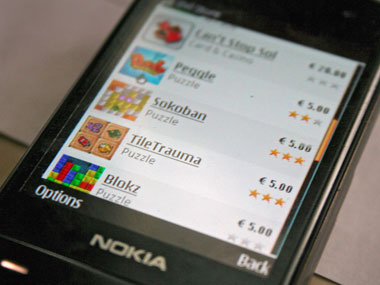Paris: Nokia’s new management will dump its Ovi services brand in favour of its company name across its offerings, the world’s largest cellphone maker by volume said on Monday. [caption id=“attachment_10541” align=“alignleft” width=“380” caption=“Nokia will rebrand its Ovi services from July. Reuters”]  [/caption] Nokia launched the brand in August 2007 for services such as maps and music offerings at a high-profile event in central London, at a time when it dominated the wireless industry with around 40 percent market share of handset sales. “This move dismantles Nokia’s dedicated Ovi services brand which was a cornerstone of the former management’s services strategy,” said Ben Wood, head of research at British wireless consultancy CCS Insight. The brand Ovi, Finnish for door, spearheaded Nokia’s push into services, a key strategy of previous CEO Olli-Pekka Kallasvuo. At its height, analysts estimated Ovi-branded services would contribute 2 euros per share to the value of the group. Nokia has scaled down several Ovi services over the past year and is focusing mostly on location-linked offerings. Nokia said it would start to rebrand its Ovi services from July. “The reasons for this decision includes the fact that Nokia is a well-known and highly-loved brand the world over. Our mobile experiences are tightly integrated with our devices — there is no longer a differentiation,” Nokia’s marketing chief Jerri deVard said in a statement. The value of the Nokia brand fell 28 percent last year to $10.7 billion, according to branding agency Millward Brown. Reuters
Paris: Nokia’s new management will dump its Ovi services brand in favour of its company name across its offerings, the world’s largest cellphone maker by volume said on Monday. [caption id=“attachment_10541” align=“alignleft” width=“380” caption=“Nokia will rebrand its Ovi services from July. Reuters”]  [/caption] Nokia launched the brand in August 2007 for services such as maps and music offerings at a high-profile event in central London, at a time when it dominated the wireless industry with around 40 percent market share of handset sales.
Advertisement
End of Article
Written by FP Archives
see more


)
)
)
)
)
)
)
)
)



